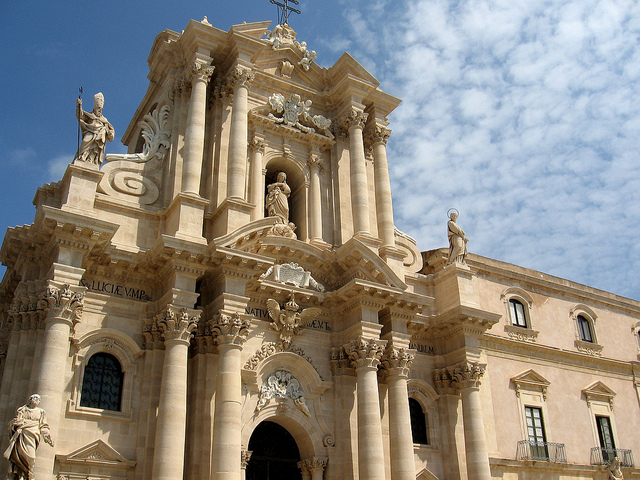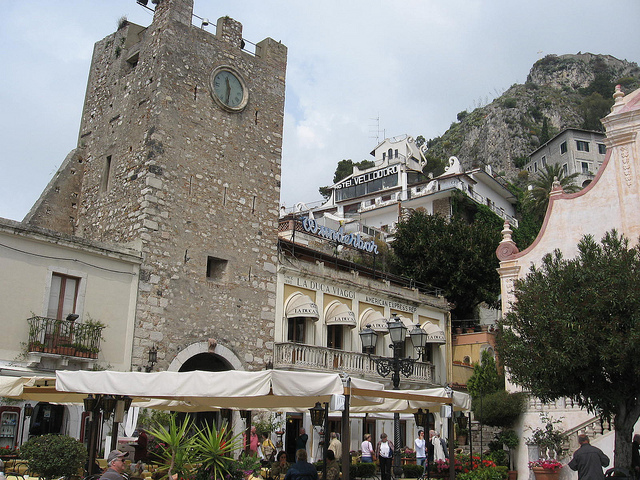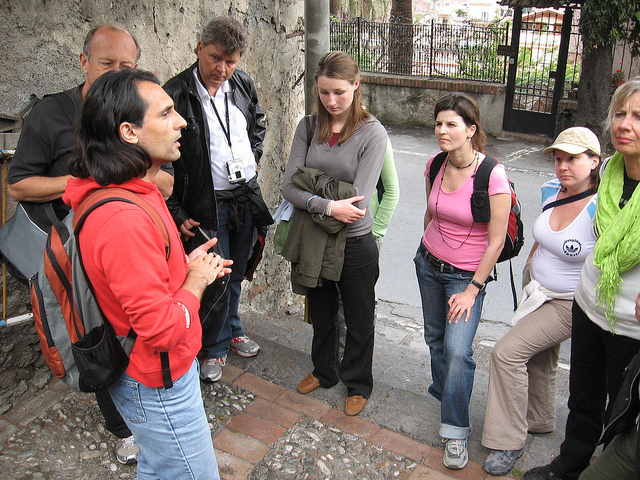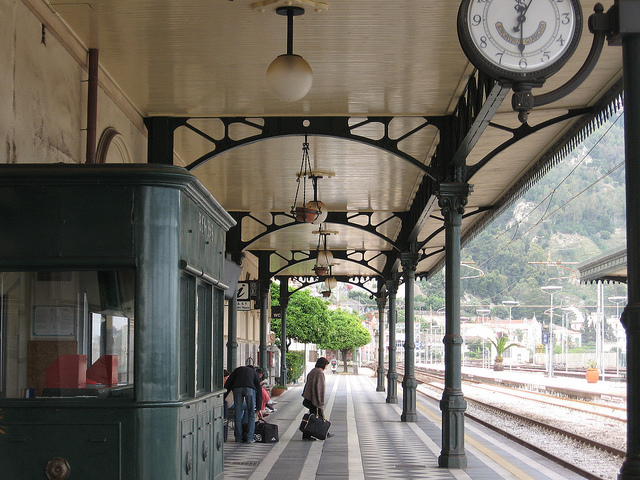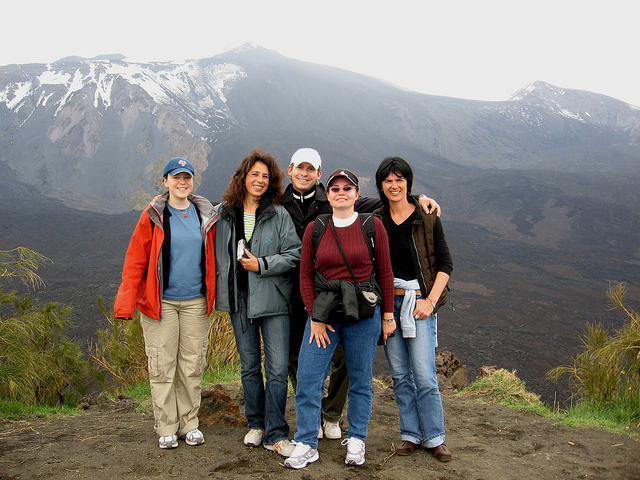Finally, my first day of beautiful weather in Sicily, a perfect day for an out-of-town excursion. I started my day with a nourishing breakfast on the terrace of Hotel Villa Nettuno and I have to say of all the places I have travelled to, the view from this terrace and the garden itself must be one of the most beautiful vistas I have ever enjoyed anywhere. Maria Sciglio, who is in her 80s, takes such amazing care of this garden which is a virtual sub-tropical paradise. I was savouring every minute of my morning meal which included a fresh croissant, coffee, tea or hot chocolate, and a fresh Italian bun with jams and honey.

Breakfast on the beautiful terrace of Hotel Villa Nettuno
I was certainly ready to take on the day and began my 7-minute stroll to the Babilonia Language School. The Piazza Corvaja was already starting to fill up with people and the beauty of Taormina in the gorgeous blue sunshine was dazzling my eyes. Bright and early at eight am thirteen people were waiting in front of the school, and our activities coordinator Peppe walked just a few steps east to a local car rental to pick up two rented vehicles: a minibus and a small car. Our little Fiat Panda was rather cozy for five people, but that’s definitely something you need to get used to. Most things in Europe, including cars, a just a bit smaller than in North America.

A bougainvillea from the hotel garden
We enjoyed a pleasant ride, exchanging stories from Switzerland, Germany, Holland and Canada, and about two and a half hours later we arrived at the Neapolis Archeological Zone in Siracusa, or Syracuse as it is known in English. For almost 3000 years Syracuse has been a major economic centre and has been inhabited since prehistoric times. The Corynthians founded this Greek city and it holds some of the best-preserved Greek archeological treasures in the world.
We got out of our vehicles and I noticed right away that this place was going to be rather crowded; not surprisingly, since a lot of people would make an excursion to a major archeological sites on a beautiful Saturday morning.

The “Orrechio di Dionysio”
The entrance free to the archeological complex was covered by the Babilonia excursion and in we walked through the turnstiles. Our first archeological sight were the so-called Latomie, which are ancient stone quarries that provided the stone for many of the Greek monuments. At various times they were also used as prisons. The most impressive man-made cave in this area is the so-called Orrechio di Dionisio (“Ear of Dionysius”), which, as legend has it, allowed the local tyrant Dionysius to hear the whispers of the prisoners that were held in its depth. The shape of the cave is indeed faintly reminiscent of an ear and when the wind was blowing in the right direction during theatrical performances, a choir positioned in the cave could be heard in the Greek amphitheatre on the other side of the rock.

The Ancient Greek Theatre of Syracusa
Another adjacent cave, the Grotta dei Cordari (Grotto of the Ropemakers) is not publicly accessible right now due to falling rocks, but it was used until recently for ropemaking. We then walked over to the Greek Theatre which was designed in the 5th century B.C. Many of the great ancient Greek playwrights wrote and staged their plays in this amazing setting.

Part of the quarries in the Neapolis Archeological Zone
Peppe explained that the ancient Greeks always built their theatres in stunning natural environments. Greek theatres were generally built as a semicircle into a mountain with a gorgeous view of a mountain range (Mount Etna for example, in Taormina), or the sea. Greek dramas would be performed in the late afternoon so the performance would coincide with the sunset. Of all the ancient civilizations that had invaded Sicily, Peppe explained that the Greeks had the greatest appreciation for nature.

The grain storage areas
